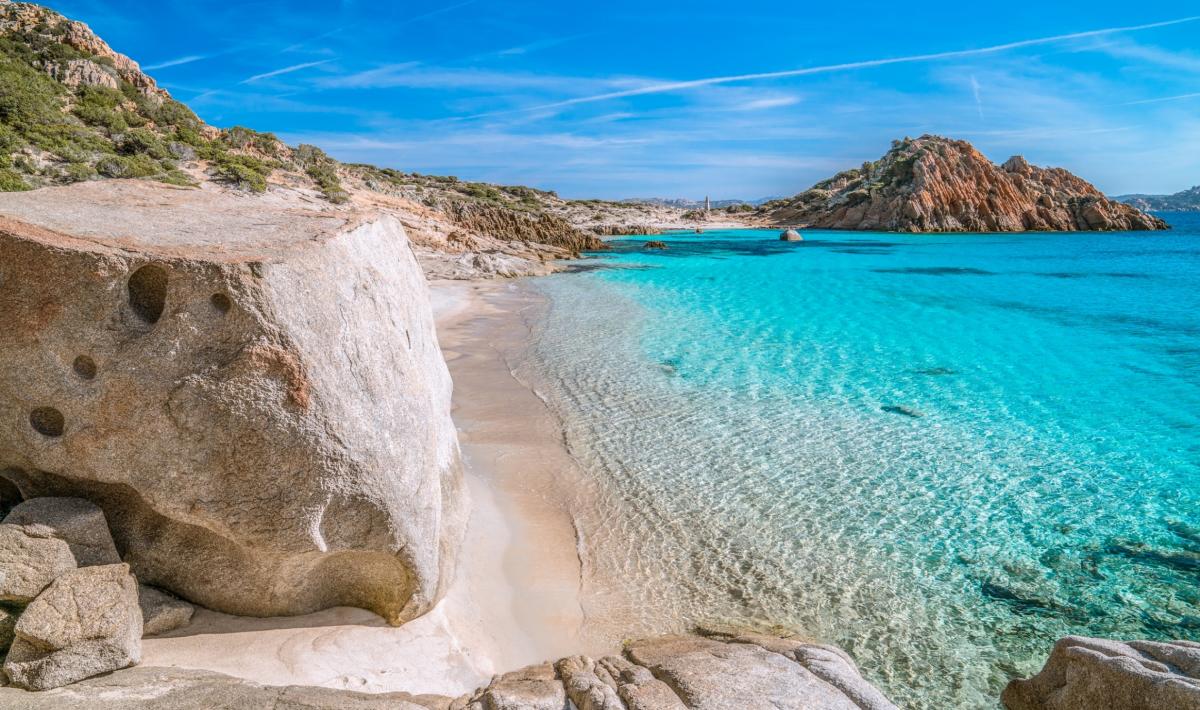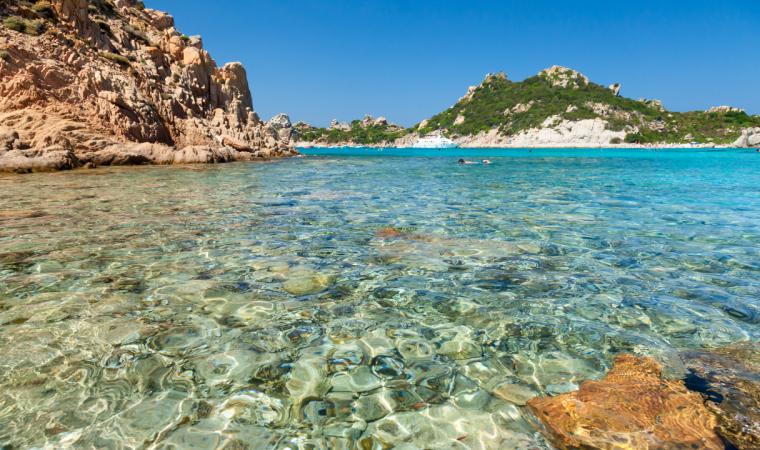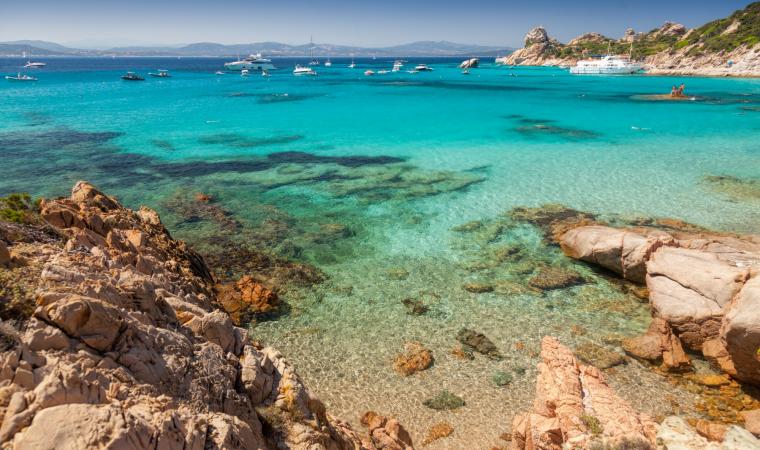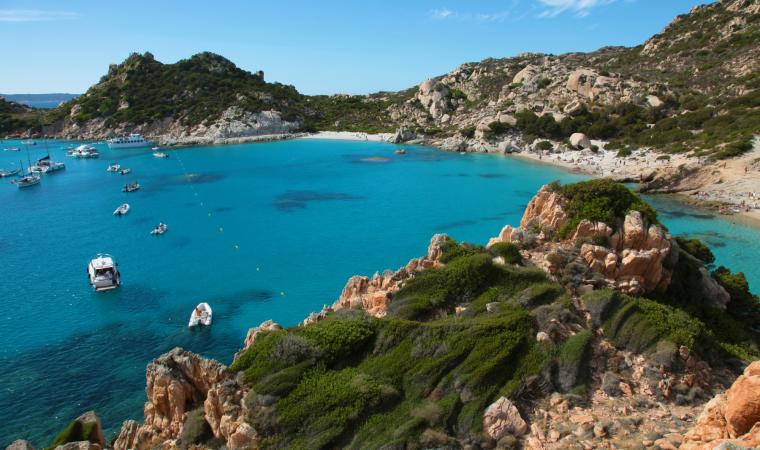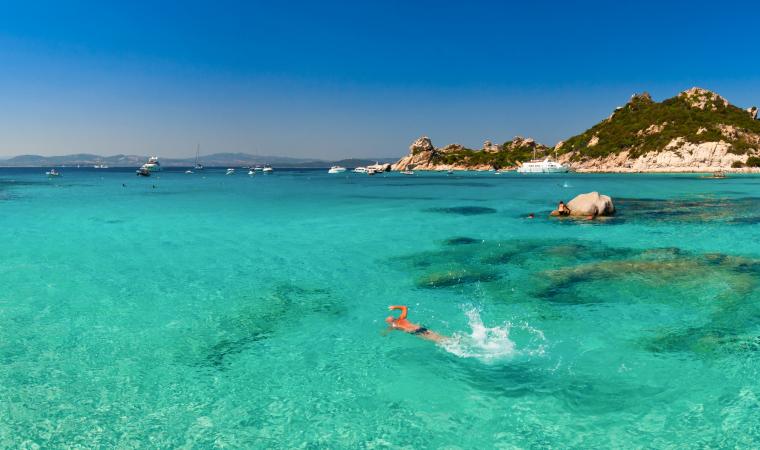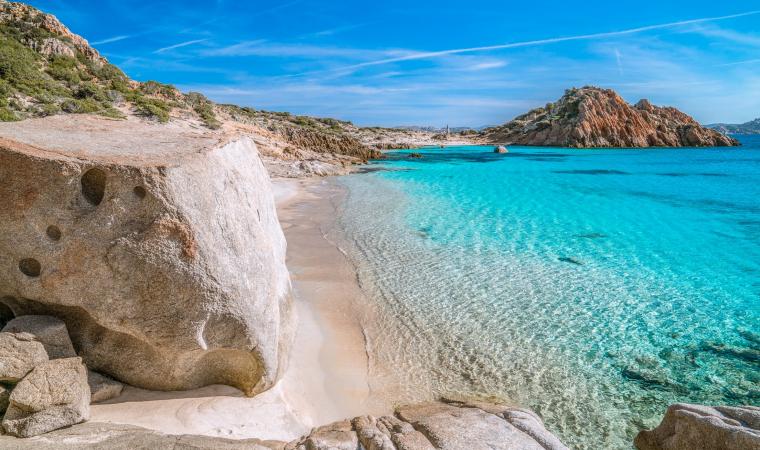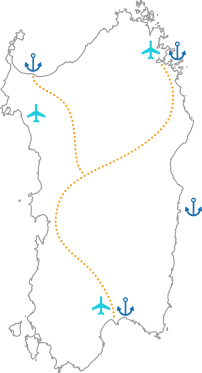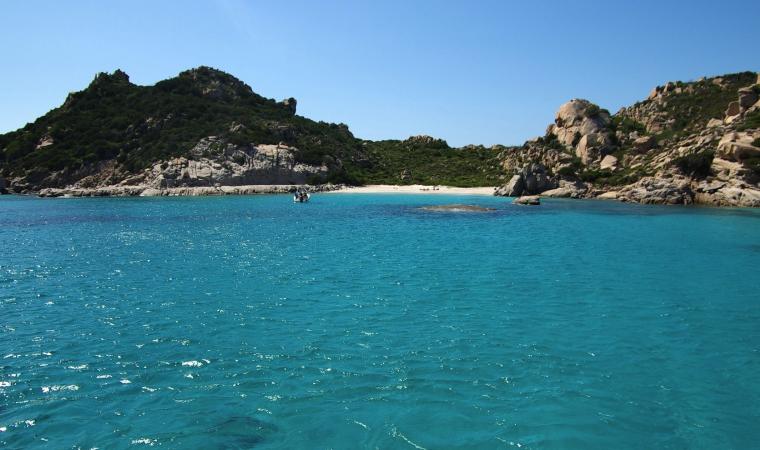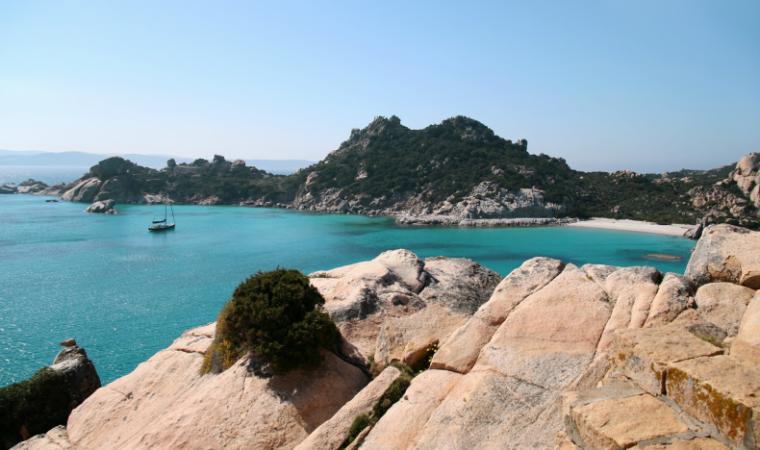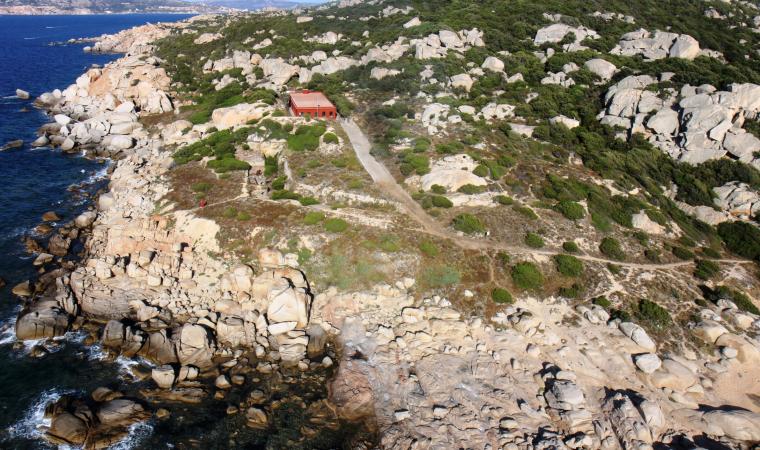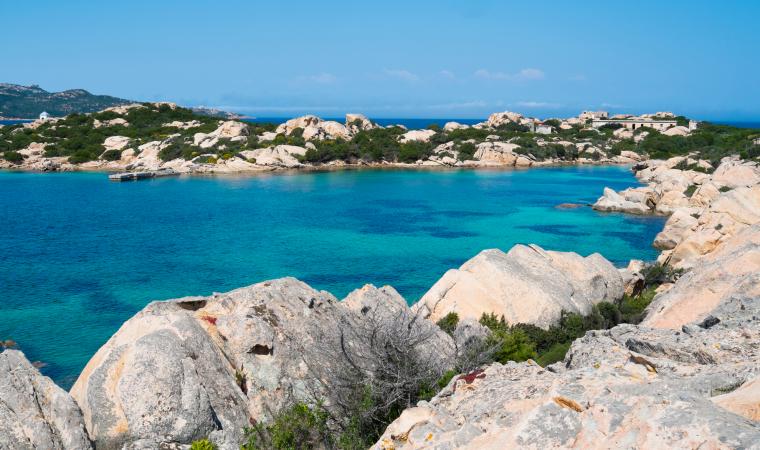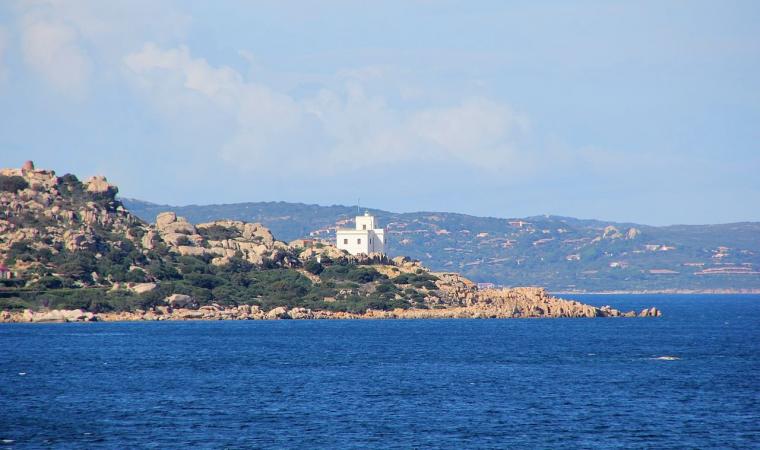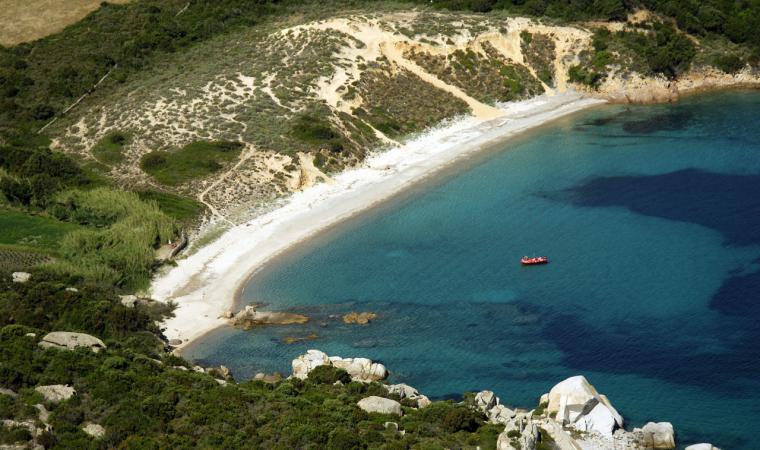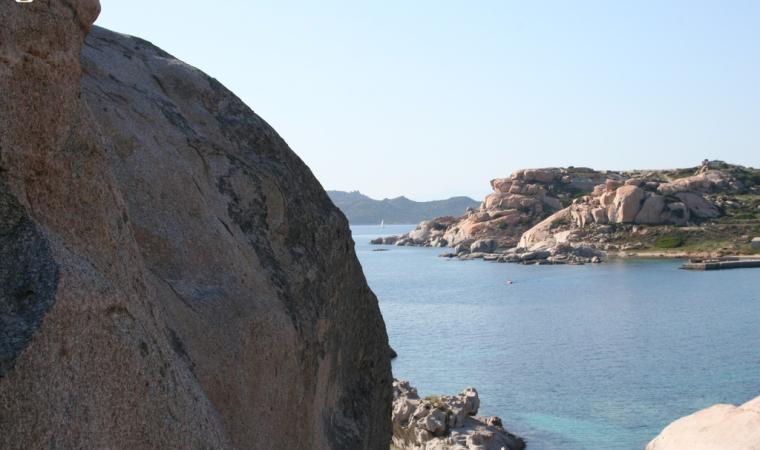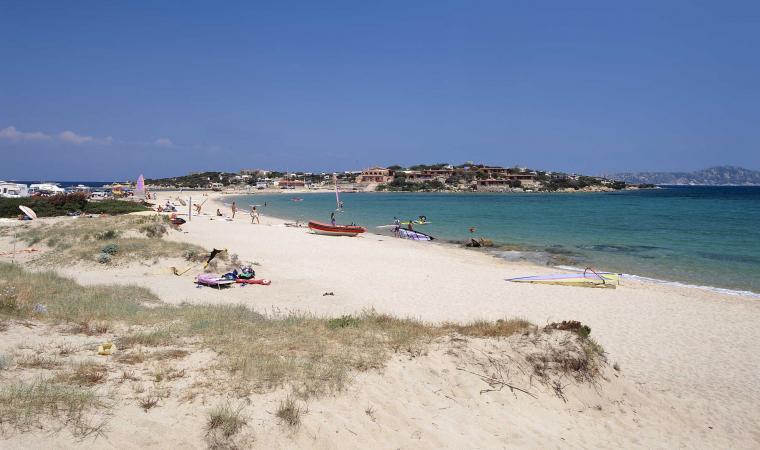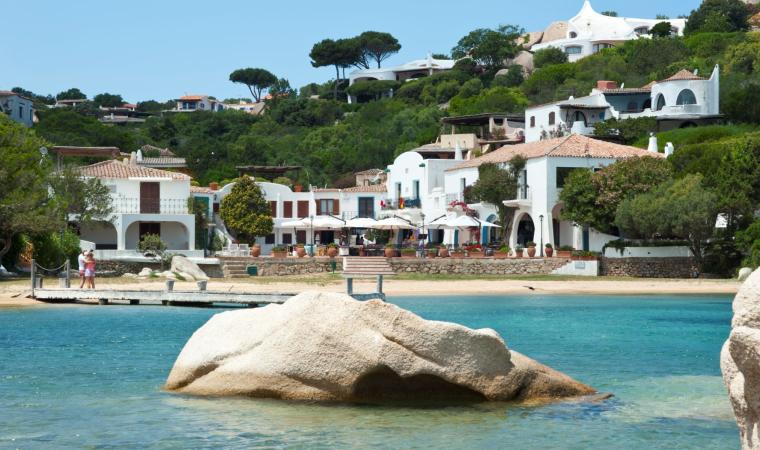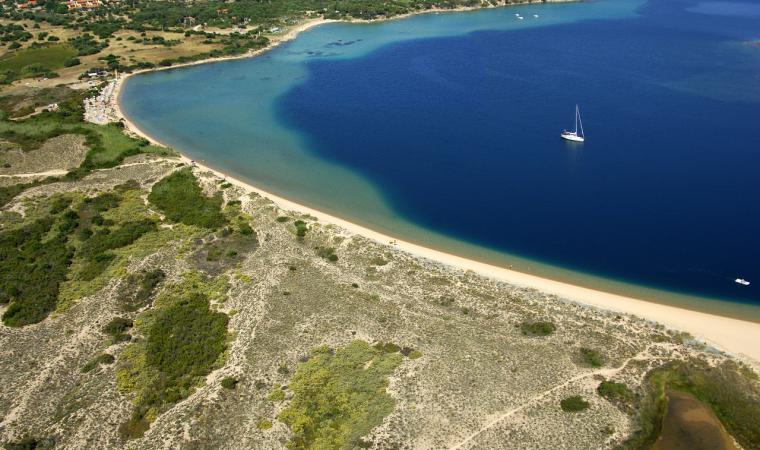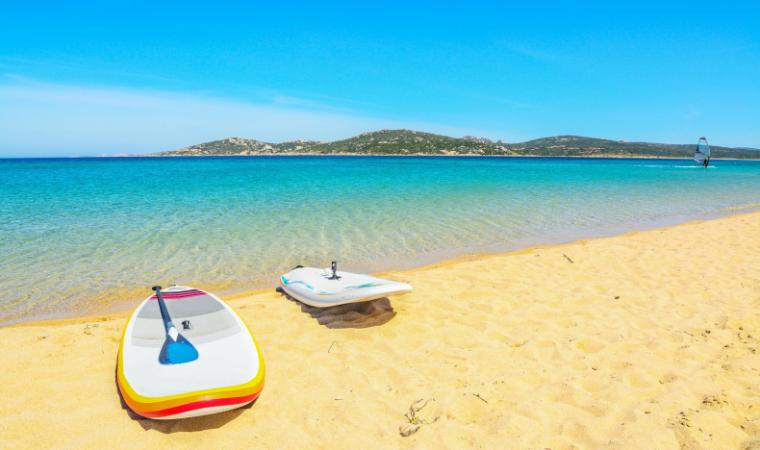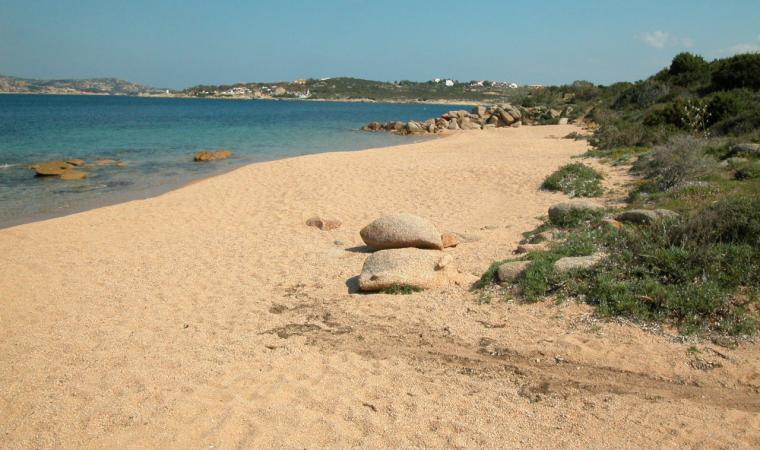Some say it was an ancient pirate lair, hence the reason for its name. And what a hideout it is! You will fall in love at first sight with this magical place that will captivate you thanks to its wild nature and the chromatic contrast between the green vegetation that pervades the granite rocks and the endless shades of the sea, from turquoise to emerald, from azure to deep blue. This is Cala Corsara, a little paradise of a bay on the southern coast of the island of Spargi, one of the most splendid pearls within the Arcipelago di La Maddalena National Park, named as 2016's most beautiful beach in Italy in the ranking of a renowned holiday site and included in the 2016 list of American magazine Forbes, naming seven beaches to visit in the Belpaese. This paradise can only be reached by boat, it being near impossible to resist the desire to dive in and swim to shore. You will immerse yourself in a heaven on earth, enjoying the tranquillity and breath-taking views.
The cove is composed of four beaches adorned with very fine white sand, being almost impalpable, surrounded by small dunes covered with junipers, brooms, roses and sea lilies. Granite rocks emerge in unique shapes, the result of thousands of years of erosion from the wind and the sea. The best known is the ‘Roccia della Strega’ ('Witch Rock') on the western side of the cove. If you prefer exploring the depths as a way of relaxation, you are in the ideal setting for snorkelling or diving down deep with fins and tanks to discover a seabed rich in surprises, such as wreckages from all ages, whilst your passion for photography will be satisfied by incredible underwater shots. On the dry land of Cala Corsara lies the Spargi wreck, a Roman cargo vessel (35 metres) from the 2nd century BC - part of its freight, having been discovered in 1939, is exhibited in the Museo Nino Lamboglia in La Maddalena.
Spargi is the third largest island of the 60 large, small and very small lands that comprise the park established in 1994. You will discover many other gems on the hike to an uninhabited paradise, thanks to its granite and its rugged nature, the hinterland of which is almost inaccessible due to being covered with Mediterranean scrub. To the south, a short distance from Cala Corsara, shines the crystalline splendour of Cala Soraya. In the eastern part, you can visit Cala Granara and Cala Canniccio, an expanse of reddish sand lapped by waters of unparalleled clarity, coloured in shades ranging from the pink of the shore to the splendid blue offshore and various shades of azure. Cala Conneri, also known as the “cove of love”, will leave you with bated breath - its fine white sand being hemmed by pink rocks where junipers, rosemary bushes and wild lilies grow. The emerald sea emits an almost surreal light. In circumnavigating the island that is somewhat circular in shape, you will encounter other coves bordered by rocks shaped over time and vegetation that extends right to the shoreline, with Cala Pietranera to the north and Cala Piscioli to the west. Along the north-west coast, there are also military fortifications that arose during the world wars: Fort Zanotto and the military port of Cala Granu. Spargi is flanked by its “little sister” Spargiotto where rare water birds nest, and the rock of Spargiottello, a destination for diving enthusiasts.
The 20,000-plus hectares of protected territory of the park - spanning 180 kilometres of coastline - are entirely an unspoilt world to discover by boat, be it autonomously or via charter departing from the ports of La Maddalena, Palau, Porto Cervo and Santa Teresa Gallura. The inlets of the island create a myriad of landings. Next to Spargi, one highlight is Budelli, embellished by the inimitable Spiaggia Rosa ("Pink Beach"). The far north consists of the beautiful Razzoli and Santa Maria, connected by a natural isthmus. To the south, one standout is Santo Stefano, a former American base. In the centre is the “big sister”, La Maddalena with wonderful beaches - including Bassa Trinita and Monti da Rena - connected to the east by a bridge to Caprera, the second largest island, dotted with splendid coves, including Cala Coticcio, also called Tahiti and famous for the Garibaldi Compendio, the last home of the “hero of two worlds”.

